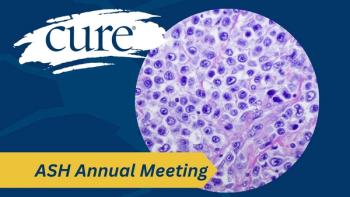
St. Baldrick's Accelerates Research to Cure Childhood Cancers
The nonprofit organization has supported advancements in pediatric cancer research over the past 20 years.
Nearly 16,000 children in the United States will receive a cancer diagnosis this year. They and their families will be faced with treatment decisions, physical and psychological side effects and mounting medical bills.
Aiming to help these children, ranging from infants to young adults, is St. Baldrick’s Foundation. Since its first event 20 years ago, the nonprofit organization wants to cure childhood cancers, which there are currently more than 100 types.
Despite the existence of an equal number of childhood and adult cancers, most government, pharmaceutical, academic and philanthropic research dollars are directed toward adult cancer research.
“Because children are not little adults, they need research dedicated to their diseases and needs,” Kathleen Ruddy, St. Baldricks’s CEO, said in an interview with CURE®. “We’re about empowering people of all backgrounds to help support cures so that kids can grow up and thrive.”
St. Baldrick’s largest annual fundraisers are its head shaving events. The first one took place on St. Patrick’s Day in 2000 at Jim Brady’s pub in Manhattan. The goal was to shave 17 heads and raise $17,000. However, 19 heads were shaved, and the event brought in $104,000 that was donated to childhood cancer research. Since then, the head shaving events have taken off nationwide, and run year-round with volunteers shaving their heads bald in solidarity with kids who often lose their hair while undergoing treatment.
To date, St. Baldrick’s has raised more than $400 million for childhood cancer research — almost all of it coming from the head shaving events. “It’s very powerful, inspirational and a generator of hope for all of those families,” Ruddy said.
The organization funds every stage of childhood cancer research from the laboratory to clinical trials. For instance, St. Baldrick’s has been at the forefront of immunotherapy research. One partnership with Stand Up To Cancer, Ruddy calls “a gamechanger on multiple fronts.” A grant outcome resulted in Kymriah (tisagenlecleucel), a type of chimeric antigen receptor-T cell therapy that involves removing a patient’s T cells, re-engineering them, then infusing them back into the body to fight the cancer. “Today, 83% of children with that type of leukemia, who were previously out of treatment options, have no evidence of disease,” Ruddy said.
Another key research focus is survivorship. Most children who face cancer in their youth will deal with long-term side effects that may affect them as adults. Therefore, developing less toxic treatments to maintain quality of life for children during and after treatment is crucial, she said.
“We’re also investing in projects that encourage data sharing,” Ruddy said. “Because there is so little money for research, capturing and sharing everything we learn in the course of treating kids has been a lower priority. Creating infrastructure to track and share data will enable researchers around the world to collaborate more and fast track discoveries.”
When asked what parents should do if their child is diagnosed with cancer, Ruddy advised parents to have their child treated at a pediatric cancer specialty center at a major children’s hospital or university research center. Such institutions offer clinical trials and state of the art care. “While many community hospitals can treat breast and prostate cancers because these are so common and there is so much research on those cancers, childhood cancers affect a smaller population and expertise is not present at most community and regional hospitals,” she said.
Ruddy added, “Many parents feel guilty and question their parenting decisions, yet nothing they did caused their child’s cancer. What we know so far about pediatric cancers is that their cause has nothing to do with parenting or diet. It’s about genetics and mutations, and that’s not something researchers can control yet, let alone parents.”
To learn more about St. Baldrick’s, visit





